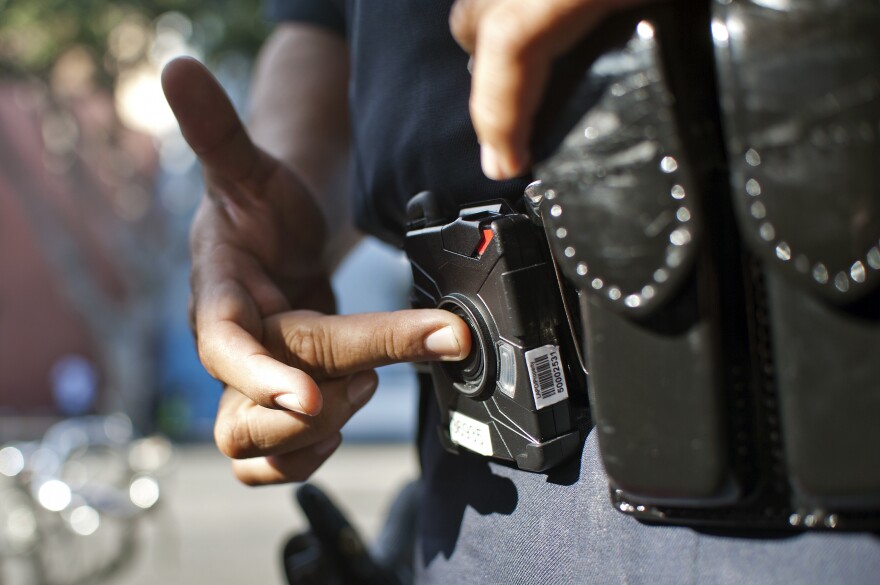With our free press under threat and federal funding for public media gone, your support matters more than ever. Help keep the LAist newsroom strong, become a monthly member or increase your support today.
LA City Council looks to revive LAPD body cameras

After stalling early this year, Mayor Eric Garcetti’s much vaunted push to place body cameras on all 7,000 Los Angeles police officers who work the streets may get new life Tuesday.
The L.A. City Council’s Public Safety Committee is set to hear a report on the costs and benefits of the proposal. Chair Mitch Englander told KPCC he hopes the council will find the $58 million needed to complete the rollout.
Body cameras came en vogue as public attention on controversial police shootings heated up nationwide. Proponents also argued the cameras could be useful in criminal prosecutions and in clearing police officers saddled with complaints.
Already, 860 LAPD officers in three districts are using the cameras. L.A. was poised to become the nation's largest police department with cameras on every officer, but funding issues have since stymied Garcetti's pledge to complete the project by the end of the year.
The price tag has worried some city councilmembers, especially LAPD plan to hire 122 new officers to store and catalog millions of hours of tape each year. Other council members argued the program could actually save money in the form of litigation costs.
The council ordered a new review of the program, which committee members will review Tuesday.
The report, by the consulting group Justice and Security Strategies found it's too early to determine any savings from an initial 860 cameras deployed last year, Englander, who has seen the report, told KPCC.
But he said the group expected long term savings, assuming the cameras lead to fewer citizen complaints, meaning less time spent investigating them, and less officer misconduct that can result in multi-million dollar payouts.
“For every ten percent reduction in use of force, just from the investigative perspective, there’s over $630,000 in savings in putting those officers back on the street,” Englander said. “You start looking at the benefits, and they just jump off the page.”
Chief Charlie Beck has urged the council to approve the contract with Taser as fast as possible.
“Delaying this proposed agreement could adversely affect prosecutions and limit the ability of the LAPD to resolve complaints against officers and close the gap in critical investigations,” Beck said in a letter to the council.
Beck has thus far resisted calls to make footage captured by the cameras public. But the footage is being used in prosecutions, according to L.A. District Attorney Spokeswoman Jane Robison.
“We are looking at them and also handing them over to the defense,” Robison said. She said most cases end in a plea bargain, and no video has been used in a trial as of yet.
Should footage be used in a criminal or civil trial, it would presumably be public at that point.
So far, body worn video has played a role in one high profile police shooting. Officers who shot an unarmed homeless man on Skid Row were wearing cameras. The LAPD, civilian Police Commission and prosecutors deemed the shooting justifiable, citing the footage in their decision.
The L.A. County Sheriff’s Department, meanwhile, has yet to deploy body cameras. Sheriff Jim McDonnell has committed to placing them on his deputies, but has yet to determine which vendor he wants to use and has made no request for funding from the L.A. County Board of Supervisors.








